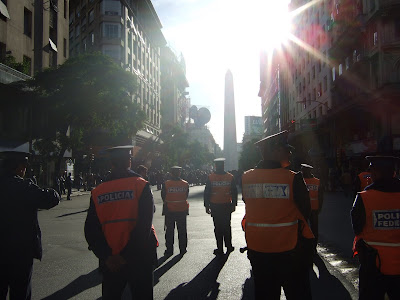 In winter, a fog, called the garúa, envelopes Lima.
In winter, a fog, called the garúa, envelopes Lima.The garúa holds Lima in a steady twilight throughout the day, so you can never know if the sun is rising or setting just by looking at the sky. It is thin and easily dissolves into the near background to reveal a world intensely detailed and surreally decontextualized, like having your picture taken in the third grade in the school gym, sitting in front of a gray plastic poster with a rainbow painted on and hot lights warming your cheeks.
Kenji Mizoguchi liked to use fog, as thick and meaty as merengue, to blur the boundary between reality and dream worlds. Can fantasies and desires nourish the corpus as an apple does? The garúa—a sinister, luminous blank—is not so generous. There is only one world, the garúa says. Here it is, on a silver platter, I can show you, reveal all, in minutiae, that in the one world you live in, there is no mystery, only ignorance and denial.
You are born of dying flesh, the garúa says. The moment you take breath, the only certainty in your so-called life is death, and yet you insist on calling what you do "living" instead of what it is: dying. You are born to die. There is neither mystery nor miracle to your existence.
But no, you are not satisfied with calling the period you spend dying "existence," the garúa says. You require meaning for your living, in your dying. You think existence is devoid of meaning, of purpose. And your meaning is defined by, driven by, those ephemeral dreams, fantasies, desires. In your self-estimation, you are too important to exist.
Can't you see? the garúa says. To exist is enough. Do not attempt to discover meaning in your dreams, the unsavory cud of a diseased and deluded mind. Your meaning is that you exist. Or else you will have died without ever being.
Do you want to know your future? the garúa says. Do not try to see beyond the fog. All you will find there is death. Turn your gaze to me, while you are still dying, while there is still time to die, and let me show you that you exist, in all of your splendid details.

























